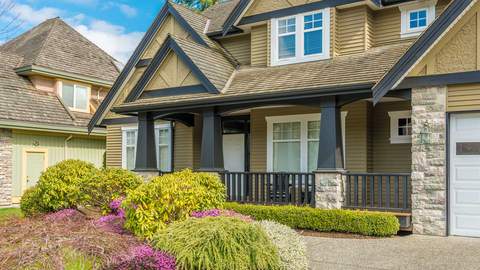With mortgage rates at historical lows, choosing between a fixed and adjustable rate mortgage can be a tough decision. Here’s some help
 When comparing fixed and adjustable rate mortgages, there are schools of thought to support either financing option. Both have strengths and weaknesses as well as benefits and pitfalls. One way to decide between fixed and adjustable rate mortgages is to understand current market forecasts and how each option works.
When comparing fixed and adjustable rate mortgages, there are schools of thought to support either financing option. Both have strengths and weaknesses as well as benefits and pitfalls. One way to decide between fixed and adjustable rate mortgages is to understand current market forecasts and how each option works.
Deciding to choose one mortgage structure over the other should be based on several factors that will be are uniquely different for each family or individual homebuyer.
Fixed-rate basics
A fixed-rate mortgage is fairly straightforward and easy to understand. This type of mortgage has an interest rate that is set and fixed during the closing of your loan. This is the interest rate you will pay for the life of the loan and it will not change.
The most common fixed-rate mortgages are scheduled out for 30 years, though more and more fixed-rate loans have been offered on 10 and 15-year schedules. (In some rare occasions, and in other countries such as Japan, it is not uncommon to find a 40 or even 50-year fixed rate mortgage.
Fixed-rate mortgages are amortized over the life of the term with the earlier payments dedicated to more interest than principal. Mortgagees can whittle away at this and make great strides in increasing the pay-off by making small and regular principal only payments on the mortgage, which won’t reduce the interest charge but can, over time, reduce the fixed monthly amount paid as the principal will be reduced and interest calculations on that principal adjusted accordingly.
If you are in a fixed-rate mortgage, be sure to read all the terms and conditions as some have early pay-off or even principal-only restrictions and penalties.
Adjustable-rate basics
An adjustable rate mortgage is sometimes referred to by the acronym ARM or by the term variable-rate mortgage. An ARM comes with an interest rate that can change over time.
There are three separate components that must be considered when taking out an ARM. The index you will want to consider what index is specified by the lender in the loan documents. The loan's rate will be adjusted periodically based on this specified index. The most commonly used indexes for ARMs include:
- The prime rate index
- The cost-of-funds index or COFI
- The U.S. Treasury bill index
The margin
 The margin of an adjustable rate mortgage is also an important consideration. The margin for an ARM is listed in the loan documents and added to the posted index. Together, the two figures will determine the interest rate that is charged on your loan at any given point in time. For instance, if the index that an ARM is based upon is listed as 5.125 percent and the margin is 1.50 percent, the two figures added together would equal a rate of 6.625 percent. The rate that you will be charged can change monthly or can remain the same for an entire year, depending on your individual loan agreement terms.
The margin of an adjustable rate mortgage is also an important consideration. The margin for an ARM is listed in the loan documents and added to the posted index. Together, the two figures will determine the interest rate that is charged on your loan at any given point in time. For instance, if the index that an ARM is based upon is listed as 5.125 percent and the margin is 1.50 percent, the two figures added together would equal a rate of 6.625 percent. The rate that you will be charged can change monthly or can remain the same for an entire year, depending on your individual loan agreement terms.
Loan cap an additional component that borrowers should consider when it comes to ARMs is the loan cap, which is simply a limit for a specific time period. The loan may have two or even three caps. The first cap is the maximum change that is allowed during the first period of adjustment. Typically, this first period of adjustment is three to five years after the loan is funded. The second cap is usually the maximum amount of change that the loan can undergo for later adjustments. The third is usually a lifetime cap, which is the most that your mortgage rates can be changed for the loan's term.
The biggest advantage of adjustable rate mortgages is that these mortgages usually start out at a rate that is much lower than fixed mortgages. The rate has the potential to remain low for the life of your mortgage, but it also has the potential to increase dramatically based on the index that it follows. Since index changes are based on changes in the financial markets, it is impossible to predict the coming rates of ARMs.
Current market rates
National mortgage rates have remained historically low for months, in part due to the policies of the Federal Reserve, which has kept interest rates low in an ongoing effort to help stimulate the nation’s economy. Low mortgage rates for both fixed and adjustable-rate mortgages make the decision for choice even more about what strategy best works for your individual needs. If you are buying a home you plan on living in for a long time, raising a family and staying in a select neighborhood, locking into a fixed-rate mortgage is more predictable and in some ways secure. If you are buying a home as a transitional living arrangement or for the investment potential, an ARM may suit you, as you will likely have a lower up-front interest rate.
In either case, it’s an unprecedented time to borrow money for buying a home. As of January 2016, here are some national ranges for interest rates being charged for common fixed and adjustable-rate mortgages:
- 30-year fixed 3.5-4%
- 30-year fixed (refinance) 3.6-4.2%
- 30-year fixed jumbo 3.9-4.5%
- 15 year fixed 2.8-3.5%
- 15-year fixed (refinance) 3-3.6%
- 5/1 ARM 2.8-3.5%
- 3/1 ARM 2.4-3.2%
Rates are susceptible to changes at any time and you have a number of resources where you can track mortgage rates.
If you are in the market for a new home and a mortgage to pay for it with, you will want to weigh the advantages and disadvantages of a fixed-rate or adjustable mortgage. Having the support and advice of a skilled pro can be a great asset and RealtyNow can help by connecting you with real estate professionals in your area, ready to assist you.
















Write a Comment